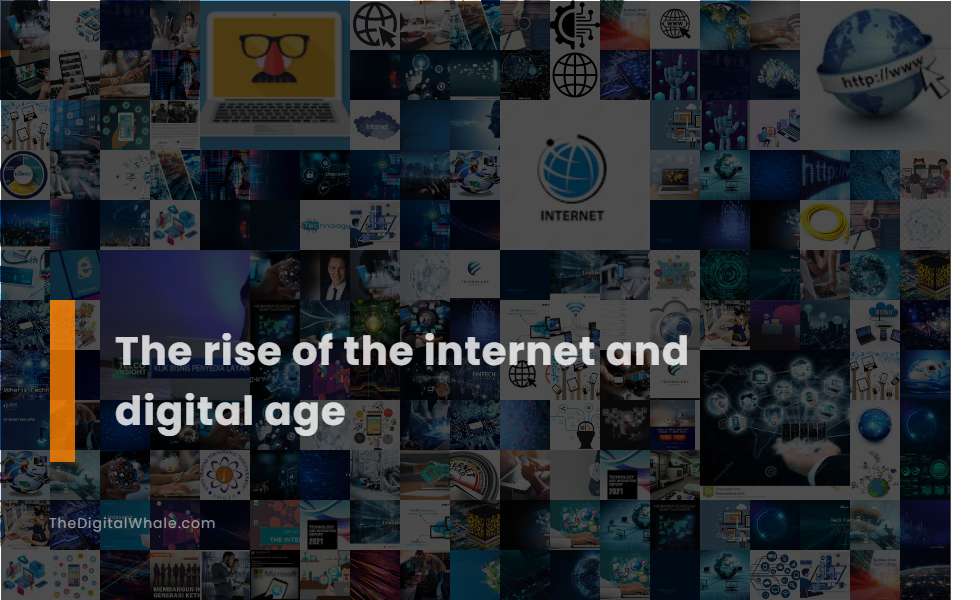The Rise of the Internet and Digital Age
What is the digital age and the internet of things? What was the impact of the internet on the rise of authoritarianism in the world? Let's find out more about The Rise of the Internet and Digital Age.

1969: The first message is sent over ARPANET, marking the birth of the internet.
On October 29, 1969, the first ARPANET message was sent from UCLA to the Stanford Research Institute, marking the birth of the Internet through the pioneering use of packet switching and dynamic resource allocation. These innovations laid the foundation for the modern Internet, fundamentally transforming information exchange. To explore more about this historical moment, visit the Birthplace of the Internet, where you can delve deeper into the technological advancements and milestones that have shaped today's digital landscape.
1971: Ray Tomlinson develops the first networked email system using the @ symbol.
In 1971, Ray Tomlinson developed the first networked email system while working on ARPANET, introducing the use of the @ symbol to separate the username from the host computer, enabling person-to-person messages between different computers. This innovation revolutionized communication by allowing users to send messages across the network, a feature that remains fundamental to email systems today. To learn more about the monumental developments in email's history, visit the Fiftieth Anniversary of Email page.
1973: Global networking becomes a reality with the connection of University College of London and Royal Radar Establishment to ARPANET.
In 1973, global networking became a reality with the connection of the University College of London (UCL) and the Royal Radar Establishment in Norway to the ARPANET, marking the first international connections to the network and enabling resource sharing across continents.
1989: Tim Berners-Lee proposes the World Wide Web, and America Online (AOL) is launched.
In 1989, Tim Berners-Lee proposed the World Wide Web as an internet-based hypertext system to link and access information across different computers, marking the beginning of a profound impact on society. Meanwhile, America Online (AOL), although its roots trace back to 1983, was not launched under its current name until 1988, but it continued to grow and innovate in the early 1990s, offering various online services including email, instant messaging, and web browsing.
1990: The World Wide Web is made publicly available, and the first commercial dial-up ISP is introduced.
In 1990, Tim Berners-Lee laid the groundwork for the World Wide Web, and on August 6, 1991, he made it publicly available through a post on the alt.hypertext newsgroup. Meanwhile, the first commercial dial-up Internet Service Providers (ISPs) were established, with The World in Brookline, Massachusetts, serving its first customer in November 1989, but gaining prominence in the early 1990s. Discover more about this pivotal moment in digital history by visiting The Next Web, which delves into how this innovation transformed global connectivity.
Related:
What is the potential negative effect of technology on children? What are the disadvantages of digital technology? Let's find out more about The Downsides of Technology Addiction.
1991: The World Wide Web is introduced to the public, and the first website is created.
In 1991, the World Wide Web was introduced to the public, and the first website was created by Tim Berners-Lee at CERN. This initial website, hosted at the URL The Project, was launched on August 6, 1991, and it provided information about the World Wide Web project, including how to create web pages and explanations of hypertext, with no colors, pictures, graphics, or animations, just text and hypertext menus.
1993: The number of websites reaches 600, and the White House and United Nations go online.
In 1993, the number of websites reached 600, and significant milestones included the White House and the United Nations going online. This year also saw the development of the Mosaic Web browser by Marc Andreesen, marking a crucial step in the expansion and accessibility of the World Wide Web.
1994: Netscape Communications is born, and Yahoo is created by Jerry Yang and David Filo.
In 1994, Jerry Yang and David Filo, electrical engineering graduates at Stanford University, founded Yahoo by creating a directory called "Jerry and David's Guide to the World Wide Web," which was later renamed Yahoo in April 1994. Meanwhile, Netscape Communications Corp. was co-founded in April 1994 by James H. Clark and Marc Andreessen, developing the Netscape Navigator web browser that significantly contributed to the growth of the internet. For more details, you can check out the History of Yahoo to understand its evolution over the years.
1998: Google is officially incorporated and introduces its search engine, and IPv6 is introduced to allow for future growth of internet addresses.
In 1998, Google was officially incorporated by Larry Page and Sergey Brin, introducing its revolutionary search engine that would become the most used web-based search engine. Meanwhile, IPv6 was introduced in 1998 by the Internet Engineering Task Force (IETF) to address the shortage of IP addresses under IPv4, providing a vastly larger address space for future internet growth.
2004: Facebook goes online, marking the beginning of the social networking era, and YouTube.com launches.
In 2004, Facebook was launched on February 4 by Mark Zuckerberg and his college roommates, initially as "TheFacebook" for Harvard students, marking the beginning of the social networking era. To explore more about its initial appearance and evolution, visit the article on Facebook. However, YouTube did not launch in 2004; it was registered on February 14, 2005, and officially launched in December 2005.
Related:
How has technology been used to exacerbate social inequalities in the United States? What are some of the benefits of technology for teenagers? Let's find out more about The Positive Impact of Technology On Teenagers.
